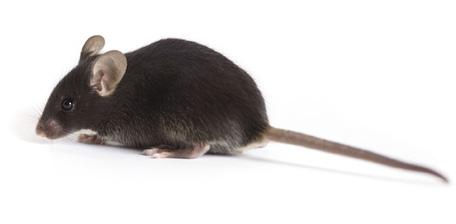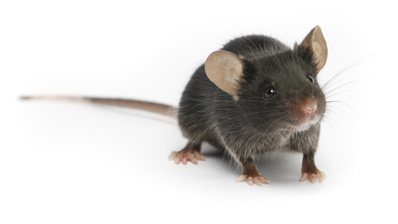Although chemotherapy is a powerful weapon in the fight against cancer, it rarely cures cancer. Too often, chemo-resistant cells initiate cancer relapse. To better understand this phenomenon, Doctors Luke Gilbert and Michael Hemann of the Koch Institute for Integrative Cancer Research at MIT, Massachusetts Institute of Technology in Cambridge, Mass., analyzed the micro-environment of lymphoma tumors in mice. In 2010 they found that DNA damage caused by doxorubicin, a front-line chemotherapy agent used to fight human cancer, induces the mouse thymus to increase its expression of two cytokines, interleukin 6 (IL6) and tissue inhibitor of metalloproteases 1 (Timp1), both of which protect lymphoma cells from the very agent meant to destroy them (Gilbert and Hemann 2010). Inhibiting this cytokine induced chemo-resistance may increase the efficacy of chemotherapy in humans.
The thymus shelter
To find out where chemo-resistant cancer cells are localized, Drs. Gilbert and Hemann tail vein-injected six- to eight-week old C57BL/6J (B6J, 000664) mice with green fluorescent protein-expressing Em -myc p19Arf-/- Burkitt lymphoma cells. When lymphoma manifested itself, the mice were treated with doxorubicin. The researchers observed that although tumors in these mice began to regress within three days, some lymphoma cells survived – mostly in the central part of the thoracic cavity that encapsulates the heart, esophagus, trachea, and a large amount of lymphatic tissue, including the thymus. In fact, the thymi of these mice had 6.5 times more viable lymphoma cells than did the peripheral lymph nodes, suggesting that the thymus acts as a "chemo-protective" niche.
Chemo-resistant cells can't hide in "athymic" mice

To verify that the thymus acts as a chemo-protective niche, Gilbert and Hemann injected lymphoma cells in Rag1-deficient B6.129S7-Rag1tm1Mom/J (002216) mice, which characteristically have a highly atrophied thymus, thymectimized B6J mice, and wild-type B6J mice. Again, when lymphoma manifested itself, the mice were treated with doxorubicin. The two scientists observed that the Rag1-deficient mice and the thymectimized B6J mice harbored significantly fewer chemo-resistant lymphoma cells and lived considerably longer than wild-type B6J mice.
Thymus-secreted IL6 and Timp1 protect lymphoma cells
Gilbert and Hemann wondered if the lymphoma cells acquire their chemo-resistance from within the tumors themselves or from the thymus. To answer this question, they cultured lymphoma cells in media derived from one of three different tissues of doxorubicin-treated mice: thymus, bone marrow and lymph nodes. They found that significantly more lymphoma cells survived in doxorubicin-laced medium if it was thymus-derived, suggesting that the cells were protected by thymus-produced factors. Gilbert and Hemann then performed an expression analysis of some 40 cytokines and chemokines in media derived from doxorubicin-treated and untreated tumors. They found that the expression of over a dozen cell migration and cell cycle control factors was sharply up-regulated in the medium derived from doxorubicin-treated tumors. Two of these factors – IL6 and Timp1 – significantly increased the survival of lymphoma cells cultured in doxorubicin-laced medium.

Gilbert and Hemann then focused their attention on IL6. They found that IL6-deficient B6.129S2-Il6tm1Kopf/J (002650) mice engrafted with lymphoma cells and then treated with doxorubicin remained both tumor free and lived significantly longer than comparably treated wild-type B6J controls, confirming previous evidence that IL6 plays a pivotal role in lymphoma cell chemo-resistance. They also determined that doxorubicin significantly up-regulated IL6 expression only in the thymus (not in peripheral lymph nodes or spleens), that both IL6 and Timp1 were produced mostly by thymic endothelial cells, and that IL6 played an important role in thymus regeneration following whole body irradiation, such as that preceding bone marrow transplants.
Jak2, Bcl-XL, p38, and other factors are involved
Gilbert and Hemann suspected that other factors were involved in chemotherapy-induced IL6 induction. IL6 and Timp1 were known to signal through Jak2 and Stat3. The two scientists focused on Jak2. They found that inhibiting it – either in vivo in doxorubicin-treated tumor-bearing mice or in vitro in cultured lymphoma cells – significantly increased doxorubicin efficacy and reduced lymphoma cell chemo-resistance.
Cytokines had been shown to mediate cancer cell survival by inducing the expression of anti-apoptotic factors. So, Gilbert and Hemann analyzed the expression of several anti-apoptotic Bcl2 gene family members in lymphoma cells cultured in thymic-derived media. They found that the expression of one of these factors, Bcl-XL, was quadrupled in these cells and that suppressing it eliminated the cells' survival advantage, suggesting that IL6-mediated induction of Bcl-XL (and perhaps other factors) facilitates lymphoma cell chemo-resistance.
Another factor, p38 MAP kinase (p38), was suspect: it is a key regulator of inflammatory cytokines, including IL6. Not surprisingly, Gilbert and Hemann found that doxorubicin-treated lymphoma cells expressed significantly more p38 than did untreated cells, and that inhibiting p38 actually reduced IL6 expression in these cells to levels below those of untreated cells. Similarly, whereas culturing human vascular endothelial cells with doxorubicin tripled IL6 expression, inhibiting p38 blocked it.
IL6 helps shelter other cancer cell types
Wondering if IL6 induction facilitates the survival of other types of cancer cells (it had been implicated in the pathogenesis of liver cancer), Gilbert and Hemann treated a liver cancer cell line with doxorubicin and waited 24 hours. IL6 secretion in the cells tripled. They found that IL6 secretion in these cells could be partially blocked by either a p38 or an ataxia telangiectasia-mutated (ATM) inhibitor. IL6 expression was not blocked by an ATM inhibitor in lymphoma tumors, suggesting that its expression pathways vary among tumor cell types.
As with lymphoma cells, treating liver cancer cells with doxorubicin and an IL6 inhibitor killed more of the cells than either treatment alone, suggesting that chemotherapy-induced IL6 expression is also chemoprotective in liver cancer.
In summary, Gilbert and Hemann demonstrated that mouse thymus endothelial cells mount a p38-mediated response to chemotherapy-induced DNA damage by secreting IL6 and Timp1, which, along with other factors, creates a chemo-resistant niche that protects a residual population of cancer cells – cells believed to be responsible for post-chemotherapy cancer relapse. These findings indicate that, to increase its efficacy, chemotherapy may have to be combined with drugs that inhibit the induction of chemo-protective factors from the tumor microenvironment.
Reference
Gilbert LA, Hemann MT. 2010. DNA damage-mediated induction of a chemoresistant niche. Cell 143:355-66.